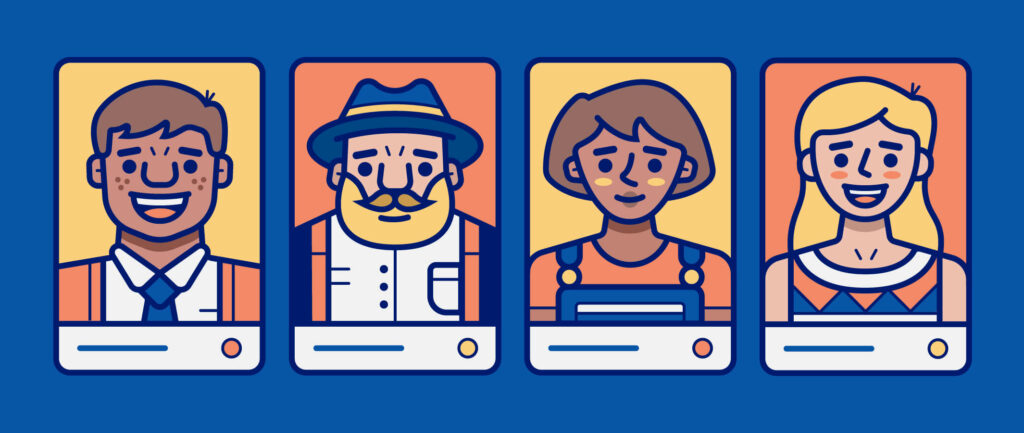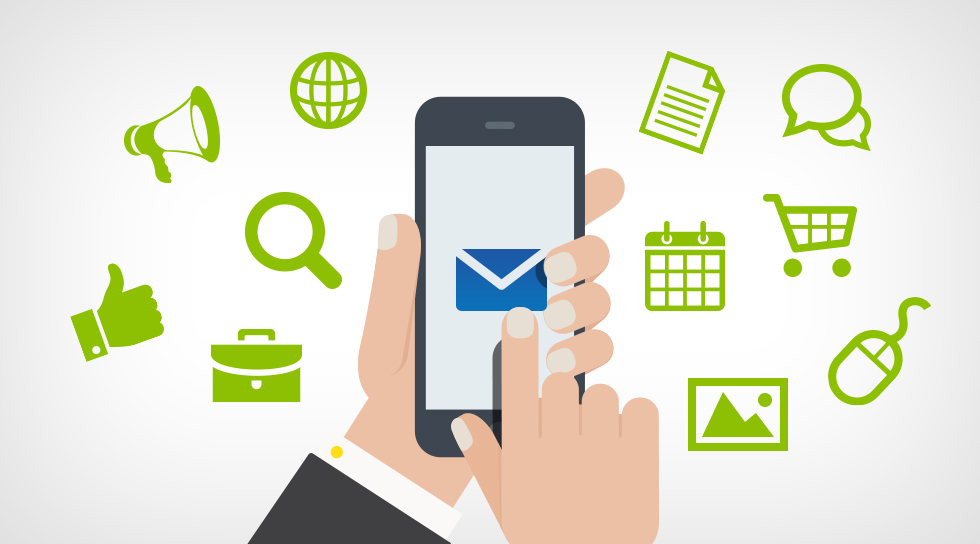Digital advocacy campaigns are essential for spreading awareness and mobilizing people to support a cause. A number of advocacy campaigns that have chosen to go digital have demonstrated promising results that your campaign could replicate.
In August 2011, the ‘Because I am a girl’ advocacy campaign’ asked supporters in Canada to write letters to their local Members of Parliament to recognize the ‘Day of the Girl Child’ as an international day. This campaign combined the power of digital platforms such as Youtube, Facebook, and Twitter, and published blogs and newsletters to engage more people.
The result of this digital advocacy campaign? By September 2011, 15,000 people signed the online petition, and 642 letters were sent to members of the parliament. In December 2011, the UN formally recognized October 11th as the International Day of the Girl Child.
Movements like these are possible today because of the widespread reach that digital advocacy campaigns enable. Let’s explore a bit about what digital advocacy is.
What is digital advocacy?
Digital advocacy involves outreach, awareness, and mobilization campaigns for people to rally for a specific cause or issue. Digital advocacy has emerged as a great way to carry out advocacy campaigns because it is:
- Faster: Your message reaches people in a relatively short span of time—especially considering the magnitude of leads and contacts.
- Reaches more people: Your digital advocacy campaign can be accessed by people even outside your geographical location.
- Helps collect critical data: Through cookies on your website, insights from your social media, and more, you can gather vital data through digital advocacy tools.
Having a great strategy to make full use of this means of advocacy is essential. We’ve listed some digital advocacy strategies that you can implement.
Digital advocacy strategies to follow
When planning a digital advocacy campaign, there are a few essential steps that you must follow. Good groundwork at the beginning of the campaign would ensure you can plan ahead and make adjustments along the way.
Here are a few digital advocacy strategies that you must know.
- Prepare for the campaign
- Recruit staff & volunteers
- Plan and design advocacy activities
- Assess your results
- Follow-up
Prepare for the campaign
Before you begin our digital advocacy campaign, you need to get clear on several things, such as:
- Mission statement – What are you setting out to do?
- Vision statement – What do you hope to achieve and why?
- Objective – The difference you wish to make through your cause and how you will achieve it.
- Timelines – How long will it take to achieve these objectives?
- Budget – What would it cost, how much money do you have, and how much do you need to raise?
- The team – Who will be your partners in your digital advocacy campaign? Do you need external collaborative partners? Do you need to hire an internal team?
- Platforms – What digital advocacy platforms do you intend to use to further your cause?
- Target audience – Who would see and respond to your digital advocacy campaign?
Once you have the answer to these questions, you will have a clear picture of your digital advocacy strategy. You can now begin to work on the other steps.
Read Also: 15 research-backed Advocacy Strategies for immediate impact
Recruit staff & volunteers
Whether you run a traditional offline advocacy campaign or a digital advocacy campaign – you need staff and volunteers to run the show. Their responsibilities include designing campaign material, uploading content online, tracking and measuring campaign performance, outreach to the target audience, and more.
You can begin recruiting volunteers by:
- Putting up volunteer recruitment postings on various advocacy portals.
- Offering student internship opportunities.
- Finding the right talent at networking events.
- Advertising on LinkedIn and other platforms.
- Hiring from universities offering advocacy programs.
Divide roles and responsibilities between the team and get your activities started. Here are a few things you can do:
- Assign a team leader and volunteers for your social media campaign. They will be responsible for all digital advocacy activities on social media platforms, such as conceptualizing and designing posts, writing content, maintaining a posting schedule, and tracking insights.
- Assign team leaders and volunteers for your outreach efforts. Whether it is reaching out to donors or calling your target audience to gather support – your outreach team will drive this initiative.
- Assign an events team. Are you hosting an online webinar? Can you host events in the digital space, such as collaborative Instagram live sessions to increase your reach? Your events team can organize these events in collaboration with your social media team.
A great team is the beginning of a great campaign. Once you have the right people to work with you on your digital advocacy campaign, you are all set to begin planning activities.
Plan and design advocacy activities
Once you know the size of your team, their skills, and the workload that a team of that size and skill can handle, you can proceed to plan and design your campaign activities.
Here are some activities you can plan for your digital advocacy campaign:
- Instagram, Youtube, or Facebook live sessions with experts.
- Webinars to raise awareness about your cause.
- Fundraising events through your social media and your website.
- Outreach activities such as calling and texting your supporters, donors, and other stakeholders to garner support.
- Texting and email campaigns to keep people updated about your advocacy campaign.
Leverage digital advocacy platforms to create a memorable campaign with different activities.
Assess your results
An essential part of a digital advocacy strategy is to assess your campaign continuously. Keep track of the metrics you want to follow, such as:
- Follower count on social media platforms.
- The number of social shares.
- The number of website visits.
- Actions taken on the website.
- Top engagement channels.
- Conversion rates from digital advertisements.
- Top advocacy campaign activities.
- Primary supporter demographic.
- Fundraising activity success and funds raised.
Remember that these metrics could be unique to your digital advocacy campaign. What might work for one organization’s campaign may not work for you to the same degree. For example, your campaign might benefit more from a larger social media following rather than newsletter opens. You need to determine what is uniquely important to your campaign and drill down on that strategy.
Follow-up
Once you have assessed your digital advocacy campaign, you can follow up by designing and deploying strategies to improve your campaign.
For example, if your fundraising email campaign did not garner the response you hoped for, assess what went wrong. You can try doing multiple things, such as:
- Change your email subject line
- Use more personalized messaging by including the first name, location, etc.
- Add more graphics to the email
- Segment your email list and share highly relevant information only to very specific audience who will appreciate it.
- Try different outreach methods that will increase the likelihood of response or conversion such as phone calls or text messages.
You can then chalk out a different email or fundraising strategy and deploy it.
Even when you are not in the midst of a range of activities, your campaign must still be busy with maintaining contact with donors, training volunteers, etc. Following up on your campaign and performance will help you create better digital advocacy campaigns which can create a higher impact.
Digital advocacy best practices
Planning and executing a digital advocacy campaign is a tremendous task. However, certain best practices can boost your results and increase the reach of your campaign. We list a few for you to explore.
- Find the right audience for your campaign.
- Make your message relatable.
- Choose the right communication channels.
- Optimize everything for mobile.
- Create communication templates for advocates.
- Find educational resources for advocates
Find the right audience for your campaign

Finding the right audience is the key to your campaign’s success. Knowing who to communicate with is half the task done and persuading them is the other half.
Here are a few ways to narrow down on your target audience:
- Conduct phone surveys to understand which demographic is most likely to support you.
- Track your social media insights to understand the age group, location, and other common traits or characteristics of people supporting your campaign.
- Understand your website traffic for audience insights.
- Observe trends from other similar digital advocacy campaigns.
Using insights from the points above, you can create a persona of the ideal person who is most likely to support your campaign.
Make your message relatable
While not everyone may understand the concept of greenhouse gases, they may relate to the increase in temperature year on year in their hometowns. Learning how to craft your message to make it more relatable with your audience will help them gain more interest in your cause.
Here are a few hacks to do so:
- Create an emotional connection with your audience.
- Clearly state the importance of your cause.
- Use simple language.
- Do not use industry-specific jargon but explain concepts in a simple way.
- Share facts and statistics to increase credibility.
Choose the right communication channels

Not every communication channel will be right for your digital advocacy campaign. Choose the communication channels where your target audience is most likely to find you. Also, keep in mind that some platforms are more effective than others for certain kinds of content. For example, short videos with background music work best on Instagram and TikTok, but longer videos work better on Facebook.
Here are important digital advocacy platforms to explore:
- Your organization’s website: Websites are your digital address and they show up when someone googles your campaign or organization. A website optimized for digital advocacy can help you fundraise, spread your message, help people contact you, and more.
- Social media: A range of social media platforms such as Facebook, Instagram, TikTok, Twitter, etc. can help you reach larger audiences within no time and mostly free of cost (unless you decide to run ad campaigns!).
- Emails: Emails are as relevant today as they were earlier, if not more. In 2022, experts predict that 333.2 billion emails will be sent across the world. Leverage the power of emails to reach out to your target audience by sending fundraising letters, donation links, signature petitions, and more. With A/B testing features, insights, and more, you can continuously improve your email campaigns for better conversions.
- Texting: Over the years, texting has gained a lot more significance in the world of digital advocacy. And why not? With software supporting two-way communication with hundreds of supporters at once, you can raise funds, share your message, hear back from supporters about their concerns and questions, share petitions and donation links via texts.
Read Also: Fundraising Through Conversational Texting – The Beginners Guide | CallHub
Optimize everything for mobile

Nearly 80% of social media time is spent on smartphones and tablets. Most Americans access information through their smartphone devices and they are most likely to come across your campaign on it—rather than on a desktop computer or laptop.
Ensuring that your social media images, website dimensions, newsletters, etc are optimized for mobile screens will increase access to your content multifold.
Here are a few ways to ensure your content is mobile-optimized:
- Choose mobile-friendly themes and templates.
- Make image files as light as possible (less loading time).
- Avoid using adobe flash to showcase animation.
- Use a readable font size.
- Avoid adding large chunks of text on pages.
- Place buttons keeping in mind mobile users.
- Space out your links so they are easy to click on.
- Test your website and other platforms on a smartphone regularly.
Create communication templates for advocates
Another best practice is to create communication templates for your digital advocates. This ensures that your messaging stays uniform, irrespective of the number of advocates on your campaign. These templates may include:
- An FAQ document that advocates can refer to.
- Well-crafted text messages to send to supporters for awareness or fundraising campaigns.
- A clear, well-defined mission and vision statement.
Find educational resources for advocates

You can also find educational content for advocates so that they are better informed about your cause. This ensures advocates never run out of ways to speak about your cause or campaign when questioned by supporters or other stakeholders. Here are a few resources to tap into:
- Research on your topic of interest by other organizations.
- Case studies where digital advocacy campaigns have been successful.
- Videos or webinars about your topic of interest.
- Personal sessions with industry experts to stay well informed.
Once you include these best practices into your digital advocacy campaign, you are all set to begin and succeed.
The way forward
With the rise in popularity of digital advocacy campaigns, it is important to educate yourself more about how you can leverage effective and create successful campaigns.
CallHub has resources you could tap into. Read our article Digital Organizing 101 – Tactics, Tools and the Ladder of Engagement to get started with mobilization.
Featured Image Source: Sarah Chai


